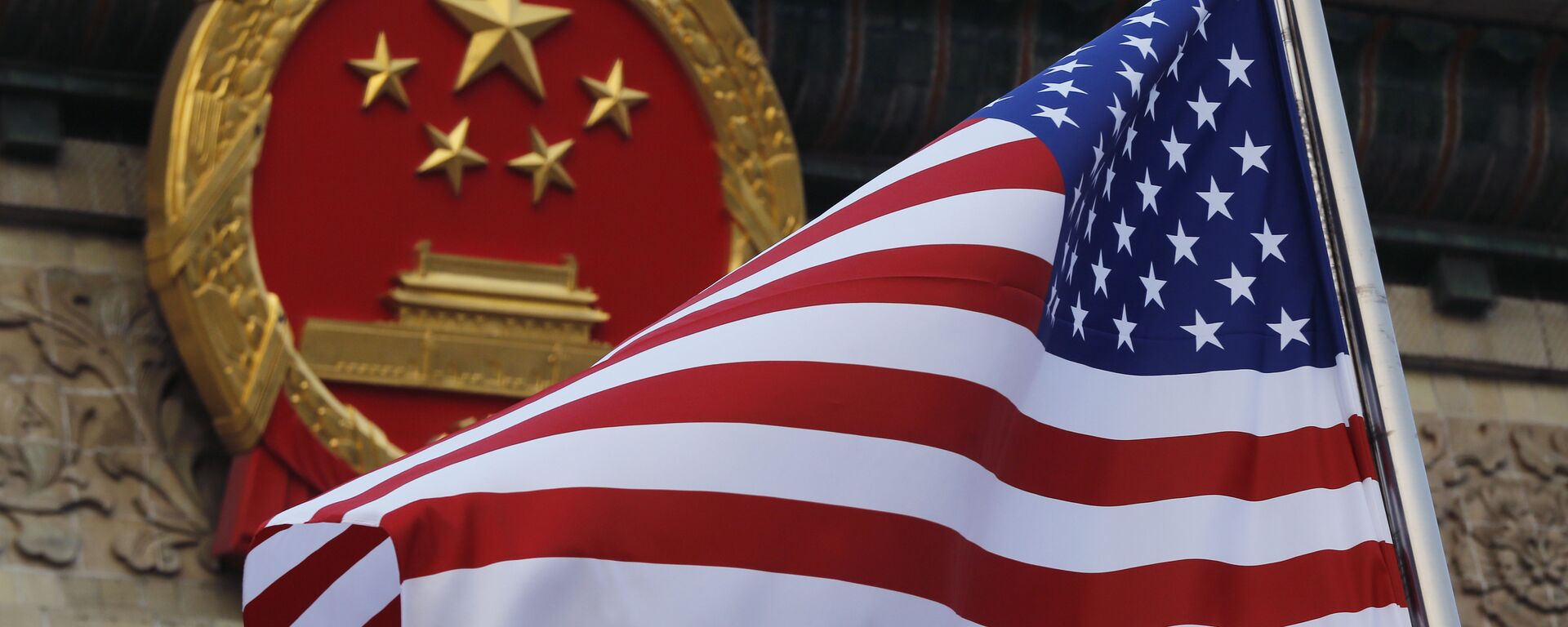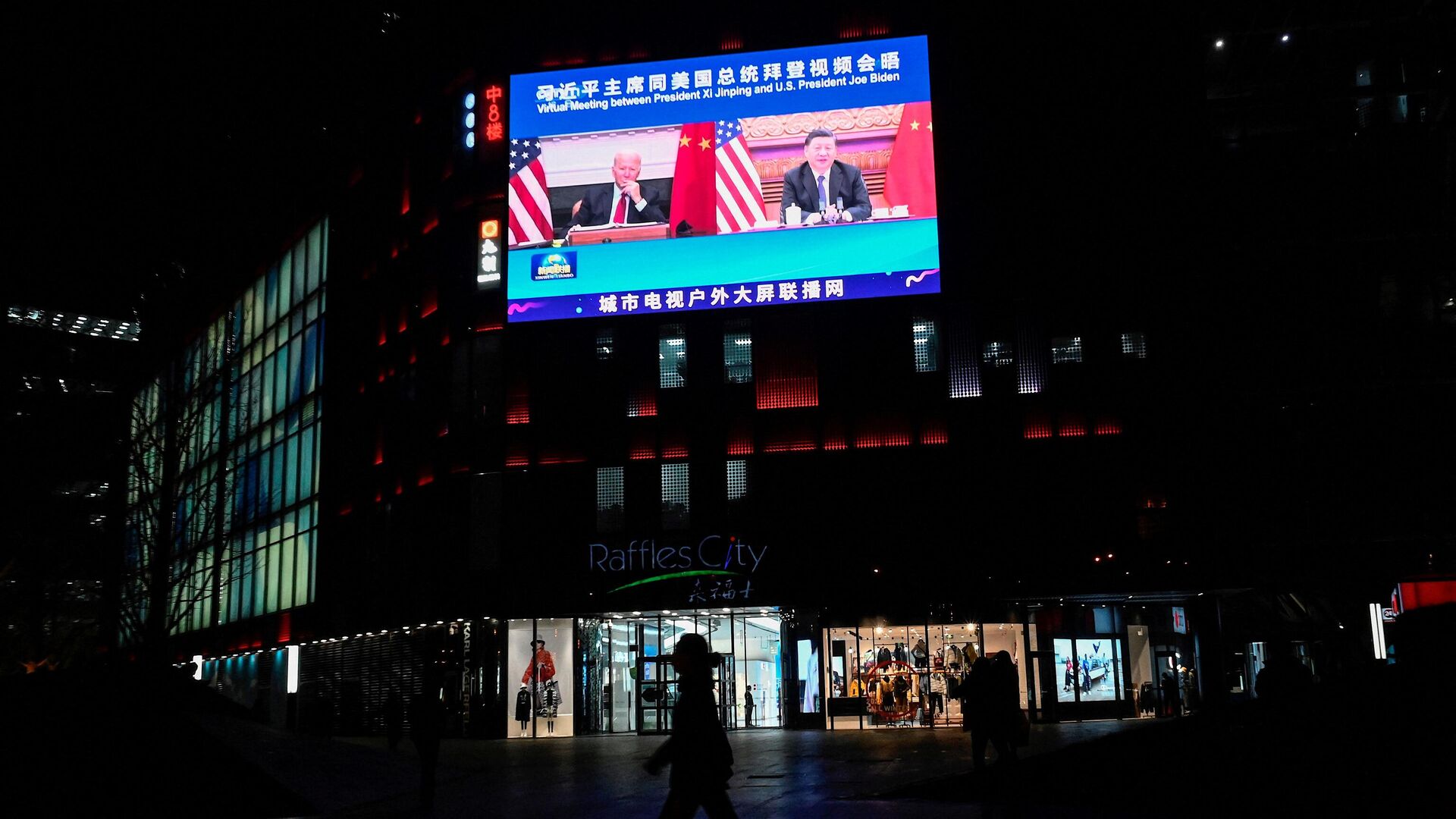https://sputnikglobe.com/20221230/us-restates-its-locked-in-global-struggle-with-china-as-beijing-urges-recalibration-of-relations-1105932377.html
US Restates It’s Locked in Global Struggle With China as Beijing Urges ‘Recalibration’ of Relations
US Restates It’s Locked in Global Struggle With China as Beijing Urges ‘Recalibration’ of Relations
Sputnik International
Over the past decade, as China continues its economic rise, the United States has ramped up its military deployments in and diplomatic engagement with Asian partners to try to hem China in both militarily and diplomatically.
2022-12-30T17:52+0000
2022-12-30T17:52+0000
2022-12-30T18:06+0000
world
us
china
us-china trade war
us-china relations
south china sea
tensions
reset
https://cdn1.img.sputnikglobe.com/img/07e5/0b/10/1090778857_0:0:3072:1728_1920x0_80_0_0_b98a68942bbe8eef900ba61afe1fad13.jpg
China is the “only competitor” to the US “with both the intent to reshape the international order and, increasingly, the economic, diplomatic, military and technological power to advance that objective,” State Department spokesman Vedant Patel has indicated.Patel’s statement, shared via tweet, was a response to Secretary of State Antony Blinken’s December 29 tweet advertising the US China strategy document he penned in May.“The strategy I set out to meet the challenge posed by the PRC rests on investing in the foundations of our strength at home, aligning our efforts with partners, and competing with China, so that we can defend our interests and our vision for the future,” Blinken wrote Thursday, in response to Chinese Foreign Minister Wang Yi’s Christmas Day statement about the economic superpowers’ need to adjust their relationship.“We will follow through with the common understandings reached between the Chinese and US presidents, strive to recalibrate the China-US relationship, and bring it back on the right course,” Wang told a forum on December 25.Wang urged the US and all major powers to reject the policy of “bloc confrontation and zero-sum competition,” and to “lead by example” in improving the world and taking responsibility for global strategic stability and development.Tensions between China and the US continue to escalate in 2022, with tensions owing largely to President Joe Biden’s continued provocative Taiwan policy, including pledges to “defend” the island in the event of an invasion by Beijing. Increased US deployments of military assets to the Asia-Pacific region, including so-called “freedom of navigation” missions through the Taiwan Strait and the South China Sea, have exacerbated tensions further. Washington has also ramped up arms sales to the island, notwithstanding commitments under a 1982 agreement with China to stop.Washington has further turned up the heat on the technology and trade war with Beijing that was kicked off by Biden's predecessor, Donald Trump, in 2018, imposing sweeping restrictions on the People’s Republic’s use of microchips made using US-owned tools in October, and banning the import of telecommunications equipment made by Huawei, ZTE, and other Chinese tech giants last month.The increasingly frantic US effort to “contain” China and rein in its development comes amid concerns about China’s growing economic, military, and diplomatic potential, with the Asian nation already outstripping US purchasing power GDP in 2014, overtaking it in scientific research output earlier this year, and making dramatic advancements in military and space technology.
https://sputnikglobe.com/20221223/us-faces-uphill-battle-against-chinas-rare-earth-dominance-experts-say-1105716089.html
china
south china sea
Sputnik International
feedback@sputniknews.com
+74956456601
MIA „Rossiya Segodnya“
2022
News
en_EN
Sputnik International
feedback@sputniknews.com
+74956456601
MIA „Rossiya Segodnya“
Sputnik International
feedback@sputniknews.com
+74956456601
MIA „Rossiya Segodnya“
china, us, united states, people's republic of china, relations, ties, competition, cooperation
china, us, united states, people's republic of china, relations, ties, competition, cooperation
US Restates It’s Locked in Global Struggle With China as Beijing Urges ‘Recalibration’ of Relations
17:52 GMT 30.12.2022 (Updated: 18:06 GMT 30.12.2022) Over the past decade, as China has continued its economic rise, the United States has ramped up its military deployments and diplomatic engagement with Asian partners to try to hem in China both militarily and diplomatically.
China is the “only competitor” to the US “with both the intent to reshape the international order and, increasingly, the economic, diplomatic, military and technological power to advance that objective,” State Department spokesman Vedant Patel has indicated.
Patel’s statement, shared via
tweet, was a response to Secretary of State Antony Blinken’s December 29 tweet advertising the US China strategy document he
penned in May.
“The strategy I set out to meet the challenge posed by the PRC rests on investing in the foundations of our strength at home, aligning our efforts with partners, and competing with China, so that we can defend our interests and our vision for the future,” Blinken wrote Thursday, in response to Chinese Foreign Minister Wang Yi’s Christmas Day statement about the economic superpowers’ need to adjust their relationship.
“We will follow through with the common understandings reached between the Chinese and US presidents, strive to recalibrate the China-US relationship, and bring it back on the right course,” Wang
told a forum on December 25.
“We have firmly rejected the United States’ erroneous China policy and have been exploring the right way for the two countries to get along with each other. As the United States has stubbornly continued to see China as its primary competitor and engage in blatant blockade, suppression and provocation against China, China-US relations were plunged into serious difficulties. In response, China has taken resolute actions to counter such power politics and bullying while pointing the right way forward through open and candid communication,” the foreign minister added.
Wang urged the US and all major powers to reject the policy of “bloc confrontation and zero-sum competition,” and to “lead by example” in improving the world and taking responsibility for global strategic stability and development.
Tensions between China and the US continue to escalate in 2022, with tensions owing largely to President Joe Biden’s continued provocative Taiwan policy, including pledges to “defend” the island in the event of an invasion by Beijing. Increased US deployments of military assets to the Asia-Pacific region, including so-called “freedom of navigation” missions through the Taiwan Strait and the South China Sea, have exacerbated tensions further. Washington has also ramped up arms sales to the island, notwithstanding commitments under a 1982 agreement with China to stop.

23 December 2022, 04:15 GMT
Washington has further turned up the heat on the technology and trade war with Beijing that was kicked off by Biden's predecessor, Donald Trump, in 2018, imposing
sweeping restrictions on the People’s Republic’s use of microchips made using US-owned tools in October, and
banning the import of telecommunications equipment made by Huawei, ZTE, and other Chinese tech giants last month.
The increasingly frantic US effort to “contain” China and rein in its development comes amid concerns about China’s growing economic, military, and diplomatic potential, with the Asian nation already outstripping US purchasing power GDP
in 2014, overtaking it in scientific research output
earlier this year, and making dramatic advancements in
military and
space technology.



